What is 'real bread'?
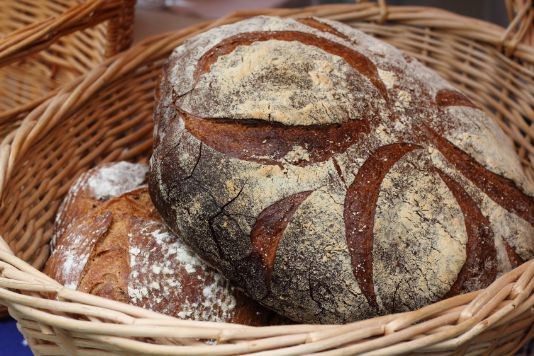
Do you know what goes into your daily loaf? The Real Bread Campaign sure does, and is fighting for better bread in Britain.
It was a letter from the Real Bread Campaign which reminded us of our love for ‘real bread’. Addressed to all bread makers and food writers, it urged us to celebrate Real Bread Maker Week (May 7-13) by thinking more about the kinds of ‘bread’ we put into our bellies.
What is Real Bread?
Good question. The Real Bread Campaign (established in 2008) believes that there are only four essential ingredients of bread: flour, water, yeast and salt. Additional ingredients are very welcome, as long as they are natural – think seeds, nuts, fruit, cheese…
As they put it themselves:
“If you add anything but salt to butter, you have to call it something else; if you add anything at all to milk, it's no longer milk. So why does similar legal protection not apply to that other staple food: bread?”
What Real Bread is NOT
Look at the back of your supermarket loaf, and you’ll probably see a lengthy list of unpronounceable ingredients. Here’s a brief (and scary) example of the ingredients usually found in an industrial loaf, courtesy of Real Bread:
E481 (sodium stearoyl-2-lactylate), E472e (mono- and diacetyl tartaric acid esters of mono- and diglycerides of fatty acids), E920 (l-cysteine), E282 (calcium propionate), E220 (potassium sorbate), E300 (ascorbic acid), E260 (acetic acid) soya flour, vegetable fat and dextrose…
…oh, and maybe a pinch of phospholipase, a dash of fungal alpha amylase and a sprinkle of xylanase. No wonder we're such a bloated nation.
99% of British households buy bread, which is the equivalent of nearly 12 million loaves sold each day. If the majority are supermarket loaves, that’s a dangerous amount of fake bread to be putting into our bodies.
The letter
In their desperate attempt to stop people eating such rubbish bread, the Real Bread Campaign encouraged us to bake our own bread in the letter, and asked us to ponder a couple of questions when we do so.
Could I use less salt?
Homebakers: when baking Real Bread try using not much more than a teaspoon (6g) per 500g of flour.
Professionals: the Food Standards Agency’s target is 1% or less by loaf weight.
Is sourdough the way forward?
As well as boosting flavour, the ‘friendly bacteria’ in genuine sourdough has a natural preservative effect – without unnecessary additives or extra salt. There is also a growing number of very interesting scientific studies reporting all sorts of health benefits of sourdough bread-making.
Is there any need to use fast-acting / instant yeast?
Dried active yeast (usually sold in cylindrical tins) is much cheaper than sachets, and is more widely available. It’s just as convenient (even in bread machines, if added with the water), will keep in the fridge for months, and, unlike most brands of the instant stuff, contains no artificial additives. Or you could get your mitts on the fresh stuff.
Do I need to add oil or fat?
Delicious, moist Real Bread is not reliant on either, so unless you’re making an enriched bread (such as a buttery milk loaf, or focaccia drizzled with olive oil), then these are just unnecessary calories.
Do I need to add sugar?
Flour contains more than enough food to keep yeast thriving. So unless you’re making a sweet bread, try leaving out the empty calories of sugar, honey, syrup or whatnot.
The Real Bread Loaf Mark
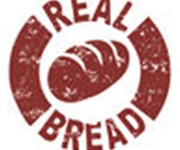 The golden seal of approval, given by the Real Bread Campaign to loaves considered to be ‘Real Bread’. Just look for the loaf mark to guarantee the best bread-eating experience.
The golden seal of approval, given by the Real Bread Campaign to loaves considered to be ‘Real Bread’. Just look for the loaf mark to guarantee the best bread-eating experience.
If you're a baker, you can sign an agreement saying that you'll only use The Loaf Mark to help you market loaves that meet the Campaign's definition of Real Bread. You can find out more about the Real Bread Load Mark scheme here.
Our top 5 make-your-own bread recipes
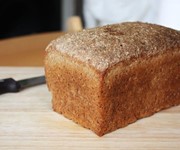 Ever tried Maslin bread? Maslin is a mixed crop of wheat and rye, and used to be the staple crop of large numbers of peasant farmers a few hundred years ago. A high-fibre, wholesome alternative to a white loaf.
Ever tried Maslin bread? Maslin is a mixed crop of wheat and rye, and used to be the staple crop of large numbers of peasant farmers a few hundred years ago. A high-fibre, wholesome alternative to a white loaf.
 Perfect for beginners, Jim Lahey’s basic no-knead bread is super simple to make and is made using minimal ingredients. The Real Bread Campaign would certainly approve!
Perfect for beginners, Jim Lahey’s basic no-knead bread is super simple to make and is made using minimal ingredients. The Real Bread Campaign would certainly approve!
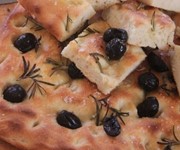 Go French with your bread, and try Jim Fisher’s fougasse for something a bit different. Fougasse keeps for only a day, but freezes really well and eats superbly when gently re-heated in a low oven.
Go French with your bread, and try Jim Fisher’s fougasse for something a bit different. Fougasse keeps for only a day, but freezes really well and eats superbly when gently re-heated in a low oven.
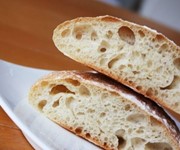 Ciabatta is deceptively simple, if you follow the right recipe. Read our tips on how to work with this extra-wet dough, along with the surprising history of ciabatta. Top tip: weighing your water rather than using a measuring jug is more accurate.
Ciabatta is deceptively simple, if you follow the right recipe. Read our tips on how to work with this extra-wet dough, along with the surprising history of ciabatta. Top tip: weighing your water rather than using a measuring jug is more accurate.
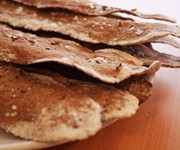 These fabulously more-ish crispbreads are a great healthy snack. Or make mini versions to serve with dips as a party nibble. Note: if you use dark rye flour instead of light rye flour, you'll need to add a bit more water because of the bran content.
These fabulously more-ish crispbreads are a great healthy snack. Or make mini versions to serve with dips as a party nibble. Note: if you use dark rye flour instead of light rye flour, you'll need to add a bit more water because of the bran content.
What do you think ‘real bread’ is? And did you know there were so many artificial additives in a regular loaf? Talk to us in the Comments below.
You might also like
The best breads to eat and bake
Lemon bread and butter pudding recipe
Comments
Be the first to comment
Do you want to comment on this article? You need to be signed in for this feature